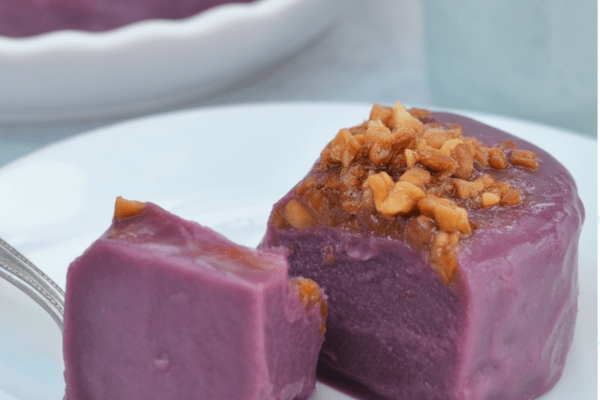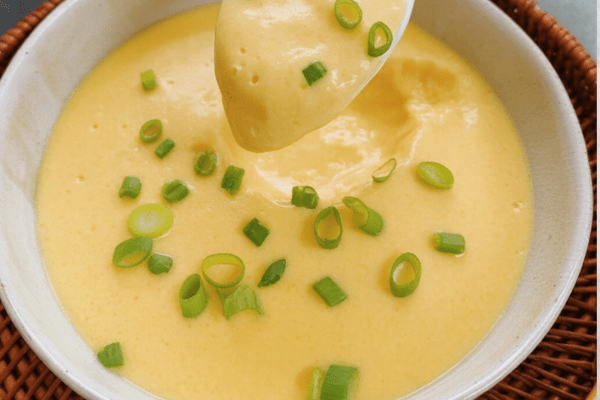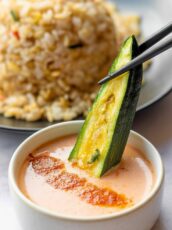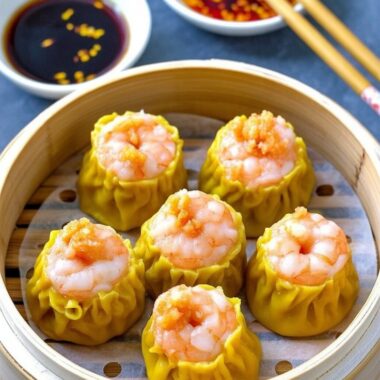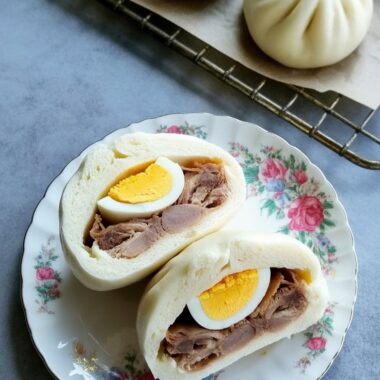If you’re anything like me, you’ll agree that good homemade sauces can completely transform dinner. This bulgogi sauce is one of those recipes I always keep in my back pocket. It’s the classic Korean-style marinade that turns thinly sliced meat into something mouthwateringly savory-sweet and full of depth. Best of all? It’s quick to throw together with easy-to-find ingredients, making it perfect for busy weeknights or weekend grilling.
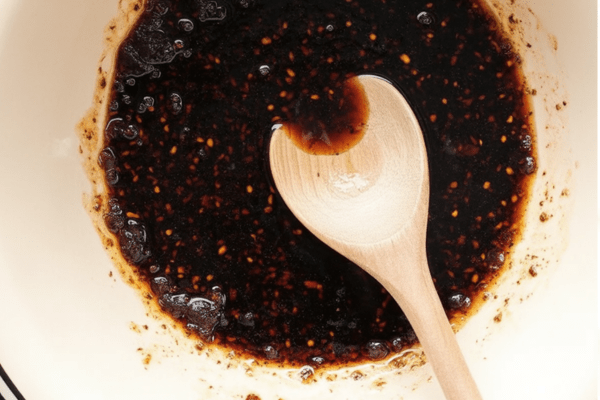
Why I Love This Recipe
This sauce is one of those things that makes you wonder why you’d ever buy the bottled stuff. It’s ready in a minute—no cooking required. Just a few pantry staples whisked together, and you’re done.
What I love most is the versatility. I don’t just use it for beef bulgogi. I marinate chicken thighs with it before grilling, toss it with noodles, or even spoon it over rice with fried eggs for an easy meal. The balance of sweet, salty, tangy, and just a touch of heat feels restaurant-quality but is totally doable at home.
It’s also a great way to introduce friends or family to Korean flavors without intimidating them with hard-to-find ingredients.
Ingredients Needed
This list is short but packs serious punch.
- Brown Sugar: Adds sweetness to balance the saltiness of the soy sauce. I use light or dark depending on what’s in the pantry—both work. Sometimes I even sneak in raw sugar for a more rustic vibe.
- Sesame Oil: The nutty backbone of so many Asian sauces. I always tell people: less is more! Too much can overwhelm. I learned that the hard way in my early cooking days.
- Soy Sauce: The salty, umami base. I’ve used everything from low-sodium to dark soy. It all works, though low-sodium keeps it from getting too salty if you’re marinating overnight.
- Red Pepper Flakes: Just enough to give it a gentle kick. You can adjust to your own heat tolerance.
- Pear: My secret weapon. Grated pear tenderizes the meat and adds subtle natural sweetness. While Asian pear is traditional, I’ve used Bosc and even Bartlett without missing a beat. Once I even swapped it for a grated apple in a pinch—it was still fantastic.
- Garlic and Fresh Ginger: Fresh really matters here. I always mince them by hand to get that pop of flavor.
- Gochujang: Korean chili paste. This adds heat, depth, and that unmistakable Korean flavor. I keep a tub in the fridge at all times—it’s also great in soups, sandwiches, and even scrambled eggs.

How to Make Bulgogi Sauce
This couldn’t be easier. It’s one of those set-it-and-forget-it steps that pays you back in flavor tenfold.
- Mix the Base: In a bowl, whisk together soy sauce, brown sugar, sesame oil, red pepper flakes, garlic, and ginger. I usually let this sit for a minute so the sugar dissolves completely.
- Add the Pear: Grate the pear finely so it’s almost like pulp. This releases the juice, which is key for tenderizing. Add it to the bowl and stir gently.
- Finish with Gochujang: Add gochujang and mix until it’s all smooth and cohesive.
- Marinate: Add your sliced meat (beef, chicken, pork, even lamb) and let it sit for at least 20 minutes. Longer is better—I like overnight when I’m planning ahead.
- Cook: Grill or stir-fry over medium-high heat until caramelized. Usually about 4-5 minutes per side for beef slices.
I love the smell that fills the kitchen when the sugars start to caramelize on the grill. It’s pure magic.

My Practical Cooking Tips
- Make It Fresh: I’ve tried doubling the recipe to save time, but the flavors don’t hold up as well. I really do make it fresh each time—it’s that quick.
- Gochujang Substitutes: If you’re in a pinch, chili garlic sauce or even sriracha works. But I encourage you to hunt down gochujang if you can. It’s incredibly versatile.
- Grate Don’t Chop: For the pear, always grate. It releases juice and blends better into the sauce.
- No Pear?: Use a super-sweet apple or even two tablespoons of honey. I’ve tried both, and they work fine.
- Customize: Add green onion, black pepper, or sesame seeds for extra personality. Sometimes I’ll add thinly sliced onion right into the marinade.
Other Ways to Use This Sauce
This isn’t just for beef bulgogi. Over the years I’ve found all sorts of fun uses:
- Marinade for Chicken or Pork: I use it on thighs, wings, even pork chops before grilling.
- Seafood: Shrimp soaks up the flavor beautifully.
- Vegetarian: Marinate tofu or toss it with roasted vegetables.
- Noodles or Rice Bowls: Drizzle it over rice or stir-fry noodles for an instant upgrade.
- Dipping Sauce: Perfect with fries, dumplings, or even veggie sticks if you’re feeling creative.
- Burger Sauce: I’ve used it on chicken sandwiches and burgers for a Korean-inspired twist.
Storage Instructions
If you make extra sauce (and didn’t add raw meat to it yet), you can store it in an airtight container in the refrigerator for up to a week. I like to give it a good stir before using it again because the ingredients can settle or thicken slightly.
If it thickens too much, let it come to room temperature or add a splash of water and stir it well.
Korean Bulgogi Sauce

This homemade bulgogi sauce is incredibly easy to make and perfect for marinating sliced meat in no time. It can be used as a traditional marinade, dipping sauce, or dressing.
Ingredients
- 1/3 cup soy sauce
- 1 teaspoon red pepper flakes (optional)
- 2 tablespoons grated ginger
- 2 cloves garlic, minced
- 2 tablespoons brown sugar
- 3 tablespoons sesame oil
- 1/2 large pear, finely grated
- 1 tablespoon gochujang
Instructions
- Begin by combining soy sauce, red pepper flakes, ginger, garlic, brown sugar, and sesame oil in a mixing bowl.
- Gently fold in the grated pear, ensuring it’s just incorporated, then mix in the gochujang.
- Transfer thin slices of meat—such as beef, chicken, or pork—into a separate bowl and pour the marinade over the top. Toss the meat well to coat it thoroughly, and allow it to marinate for at least 20 minutes to soak in the flavors.
- Preheat a grill to high or lightly grease a large skillet, placing it over high heat. Once it’s hot,
- cook the marinated meat for about 4 to 5 minutes on each side until it’s fully done.
Notes
- This amount of sauce is enough to marinate 1/2 pound of beef strips.
- To store: If the sauce hasn’t been used to marinate any protein, it can be stored in the refrigerator, covered, for up to one week. If it thickens, let it come to room temperature before using.
Nutrition Information:
Yield: 8 Serving Size: 1Amount Per Serving: Calories: 80Total Fat: 5gSaturated Fat: 1gTrans Fat: 0gUnsaturated Fat: 4gCholesterol: 0mgSodium: 691mgCarbohydrates: 8gFiber: 1gSugar: 5gProtein: 1g
Asianplated.com, occasionally offers nutritional information for recipes contained on this site. This information is provided as a courtesy and is an estimate only. This information comes from online calculators. Although allchickenrecipes.com attempts to provide accurate nutritional information, these figures are only estimates.
Frequently Asked Questions
Is Korean BBQ sauce the same as bulgogi sauce?
Not exactly. Korean BBQ sauce is a broader category that can include all sorts of marinades and glazes for grilled meats. Bulgogi sauce is a specific style of marinade traditionally used for thinly sliced beef. It has a unique balance of sweet, salty, garlicky, and spicy flavors that make bulgogi so distinctive.
Final Thoughts
I hope you’ll give this bulgogi sauce a try. It’s one of those recipes that feels like a little gift every time you make it. It’s simple enough for a weeknight but impressive enough for company. I can’t tell you how many friends have asked for the recipe after dinner at my place.
Try other recipes:

